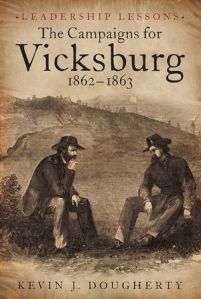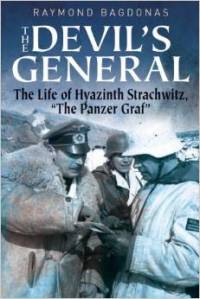
Five stars plus! I loved reading this amazing book by Kevin Dougherty. “The Campaigns for Vicksburg, 1862-63: Leadership Lessons” is too good of a book to be relegated as just another history of Vicksburg. Bookstores should not limit the book to assignment in the military history section. It deserves a prominent place in the business section with the books on leadership and management as well as the military history section. As I read the book I was reminded of a book I read in the early 1990s, "Leadership Secrets of Attila the Hun". The book is that good!
Kevin Dougherty does a great job of providing leadership lessons from the key military and political leaders of the time. He helps us understand Vicksburg. He does this by sharing the challenges, characteristics, and styles associated with leadership during the Civil War. He follows with an overview of the entire Vicksburg Campaign.
Next, he provides thirty case studies or leadership vignettes. He starts with General Winfield Scott’s Anaconda Plan. He carries us systematically through the campaign. We meet and learn about the key leaders and engagements. Each of the thirty vignettes begins with the short summary. It follows with a succinct history of the event (e.g. Chickasaw Bayou: William Sherman and Knowing When to Quit). Sharing the resulting leadership lessons learned from the event follow. The chapters (vignettes) conclude with a sidebar of “Takeaways” which provide a succinct summary of the lessons learned.
As you are enjoying reading the book, you learn valuable lessons on the difference between management and leadership. You gain an understanding of servant leadership. You see the value of clear communication from leaders to their subordinates. You comprehend the worth of personal presence of the leader in an organization.
The author ends the book with conclusions about leadership during the Vicksburg campaign. The areas covered are strategy, confidence, unity of effort, frame of reference, situational awareness, risk taking, problem solving, personal bravery, and technical skill. The inclusion of the Vicksburg Campaign Order of Battle as an appendix is appreciated and helps with the understanding of the size of the leadership task faced by General U.S. Grant.
“The Campaigns for Vicksburg, 1862-63: Leadership Lessons” is a valuable addition to the study of leadership and Vicksburg. It would be an excellent study for business leaders as well as the professional officer and soldier. I recommend its addition to the personal library of all students of military science. My hope is it would be included in the reading lists of the officer basic or advanced courses. As in "Leadership Secrets of Attila the Hun", the lessons presented in "The Campaigns for Vicksburg, 1862-63: Leadership Lessons" are timeless.
Well done, Lt. Col. Kevin Dougherty, Ph.D. , US Army (retired) Adjunct Professor, Tactical Officer at The Citadel. I enjoyed your book. Well done, indeed!


 Jimmie Aaron Kepler is a novelist, poet, book reviewer, and award-winning short story writer. His work has appeared in over twenty venues, including Bewildering Stories and Beyond Imagination. When not writing each morning at his favorite coffee house, he supports his writing, reading, and reviewing habit working as an IT application support analyst. He is a former Captain in the US Army. His blog Kepler's Book Reviews was named a 100 best blogs for history buffs in 2010. You can visit him at
Jimmie Aaron Kepler is a novelist, poet, book reviewer, and award-winning short story writer. His work has appeared in over twenty venues, including Bewildering Stories and Beyond Imagination. When not writing each morning at his favorite coffee house, he supports his writing, reading, and reviewing habit working as an IT application support analyst. He is a former Captain in the US Army. His blog Kepler's Book Reviews was named a 100 best blogs for history buffs in 2010. You can visit him at 

















